Returning Home (Page Five)

We left a few minutes early in order to stop at the fish house for a beer and a glass of wine!

JR is pretty special.... Get's his own bus!

The blimp is over the track
Awaiting The Choo Choo

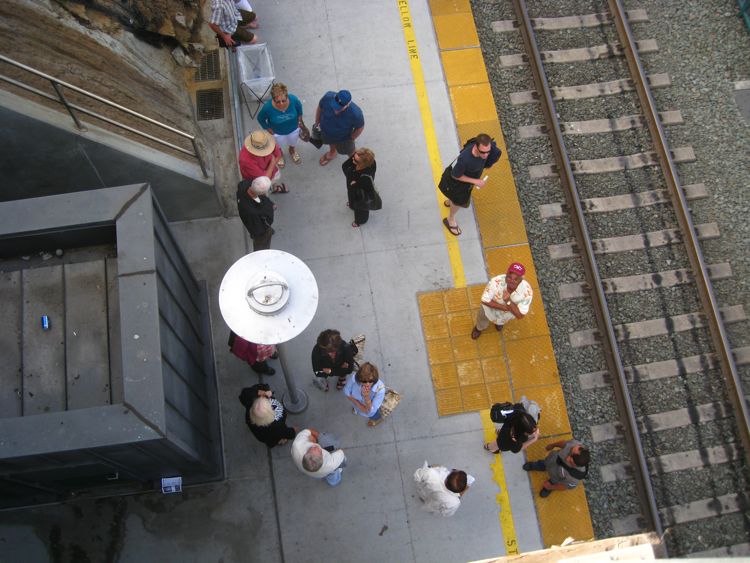
M-m-m-m-m
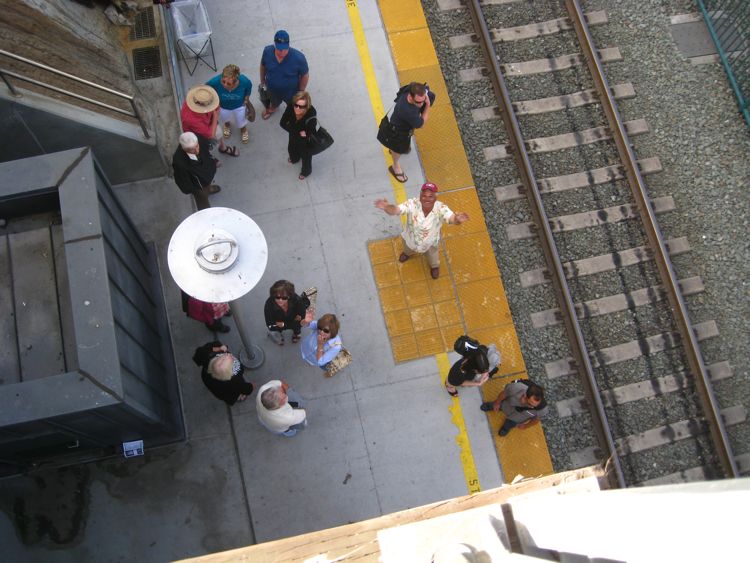
James attempts his Superman move




JR has his winnings inside the coat


Nice socks John
Right On Time


... but wrong train...

2,000 gallon tank... Wow
Did you know? - This huge tank in the underbelly of the locomotive holds 2,200 gallons (8,328 L) of diesel fuel. The fuel tank is compartmentalized, so if any compartment is damaged or starts to leak, pumps can remove the fuel from that compartment. Our train gets about 1.5 gallons to the mile!
Can't Resist Train!

Steel wheels for a reason!
Did you know? - Ever wonder why trains have steel wheels, rather than tires like a car? It's to reduce rolling friction. When your car is driving on the freeway, something like 25 percent of the engine's power is being used to push the tires down the road. Tires bend and deform a lot as they roll, which uses a lot of energy.
The amount of energy used by the tires is proportional to the weight that is on them. Since a car is relatively light, this amount of energy is acceptable (you can buy low rolling-resistance tires for your car if you want to save a little gas).
Since a train weighs thousands of times more than a car, the rolling resistance is a huge factor in determining how much force it takes to pull the train. The steel wheels on the train ride on a tiny contact patch -- the contact area between each wheel and the track is about the size of a dime.
By using steel wheels on a steel track, the amount of deformation is minimized, which reduces the rolling resistance. In fact, a train is about the most efficient way to move heavy goods.
The downside of using steel wheels is that they don't have much traction. In the next section, we'll discuss the interesting solution to this problem.



Traction when going around turns is not an issue because train wheels have flanges that keep them on the track. But traction when braking and accelerating is an issue. This locomotive can generate 64,000 pounds of thrust. But in order for it to use this thrust effectively, the eight wheels on the locomotive have to be able to apply this thrust to the track without slipping. The locomotive uses a neat trick to increase the traction.
In front of each wheel is a nozzle that uses compressed air to spray sand, which is stored in two tanks on the locomotive. The sand dramatically increases the traction of the drive wheels. The train has an electronic traction-control system that automatically starts the sand sprayers when the wheels slip or when the engineer makes an emergency stop. The system can also reduce the power of any traction motor whose wheels are slipping.

Did yo knuow? - The knuckle coupler or Janney coupler was invented by Eli H. Janney, who received a patent in 1873 (U.S. Patent 138,405) . It is also known as a "buckeye coupler", notably in the United Kingdom, where some rolling stock (mostly for passenger trains) is fitted with it. Janney was a dry goods clerk and former Confederate Army officer from Alexandria, Virginia, who used his lunch hours to whittle from wood an alternative to the link and pin coupler.
In 1893, satisfied that an automatic coupler could meet the demands of commercial railroad operations and, at the same time, be manipulated safely, the United States Congress passed the Safety Appliance Act. Its success in promoting switchyard safety was stunning. Between 1877 and 1887, approximately 38% of all railworker accidents involved coupling. That percentage fell as the railroads began to replace link and pin couplers with automatic couplers. By 1902, only two years after the SAA's effective date, coupling accidents constituted only 4% of all employee accidents. Coupler-related accidents dropped from nearly 11,000 in 1892 to just over 2,000 in 1902, even though the number of railroad employees steadily increased during that decade.


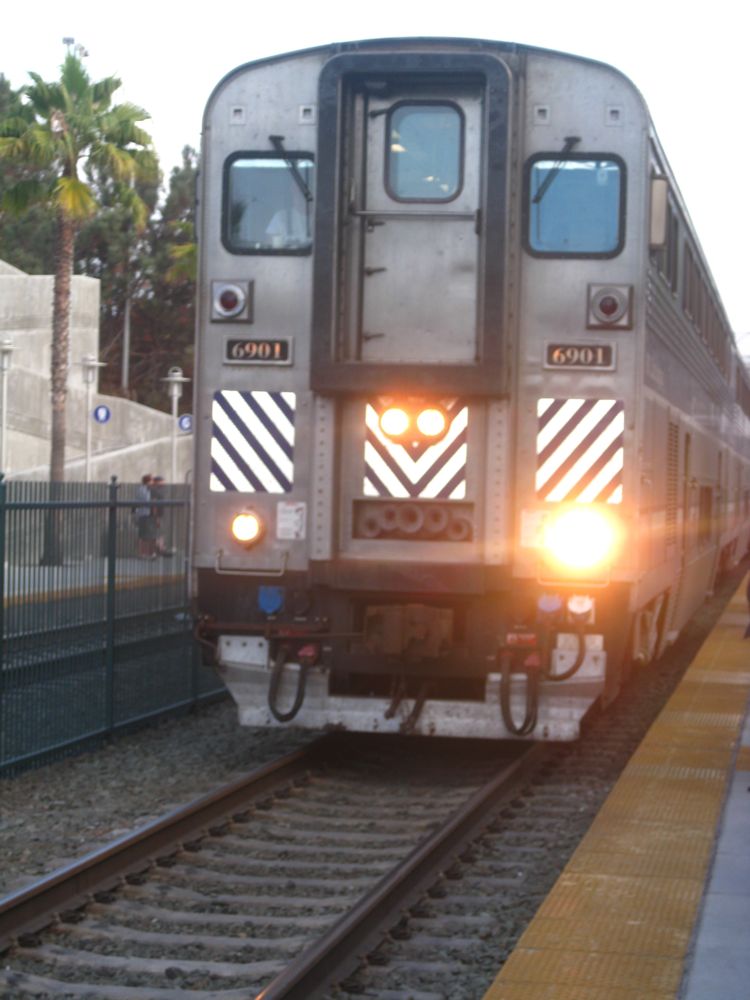
We Are On Our Way





Super sunset
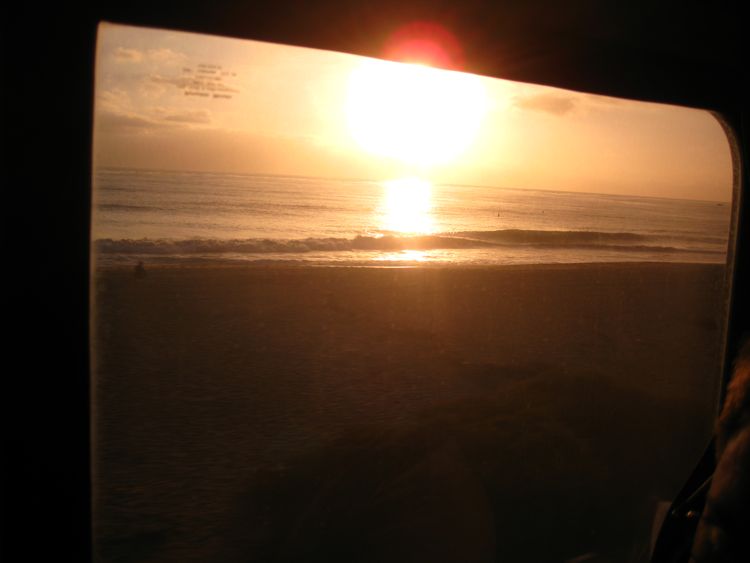
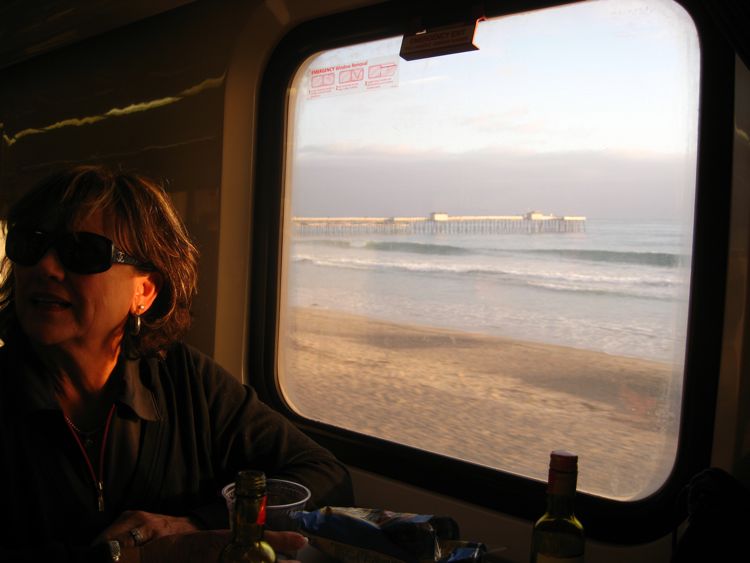
The pier still had people on it... Brrrrr

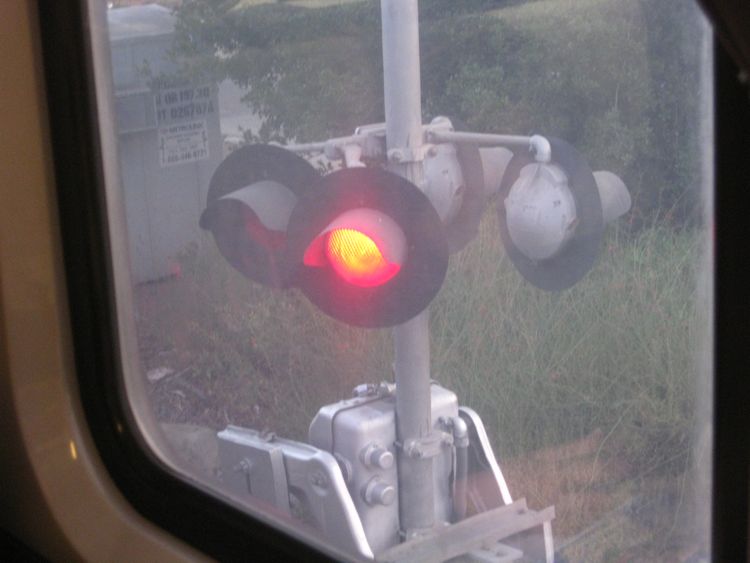
No kidding
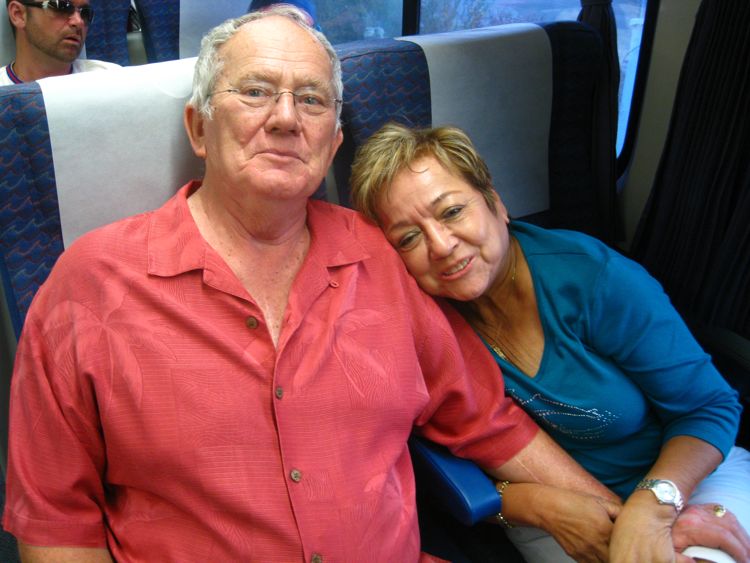

"Can I have just one more... Pluuuueeeeze?"

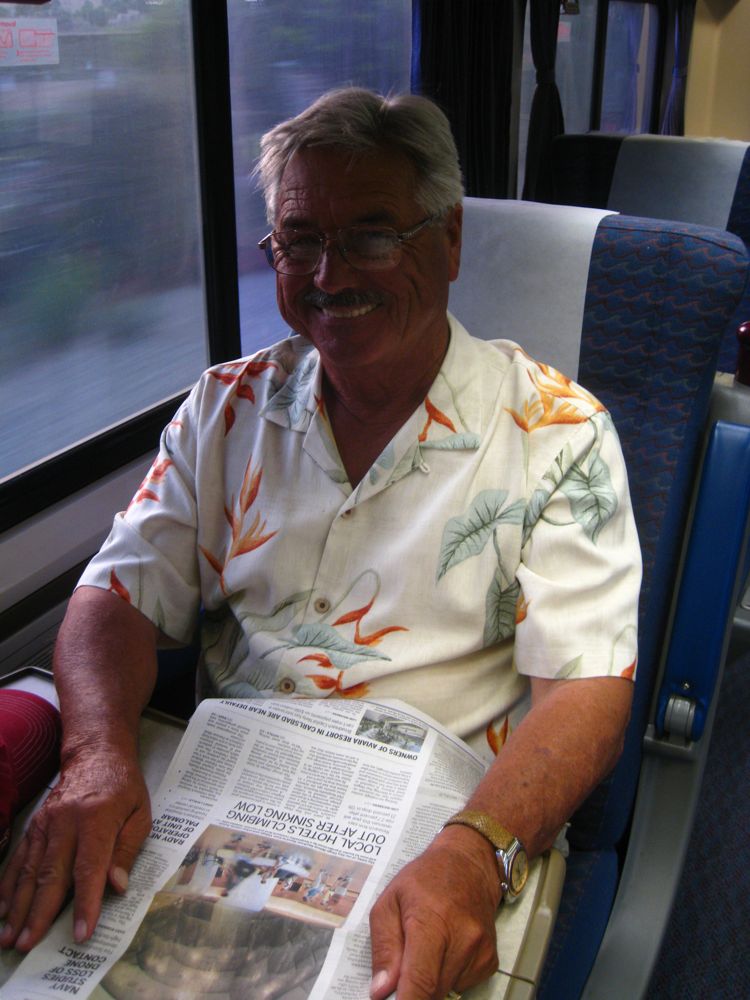

Sometimes he talks to himself

1-2-3-4
We Be Arrived...

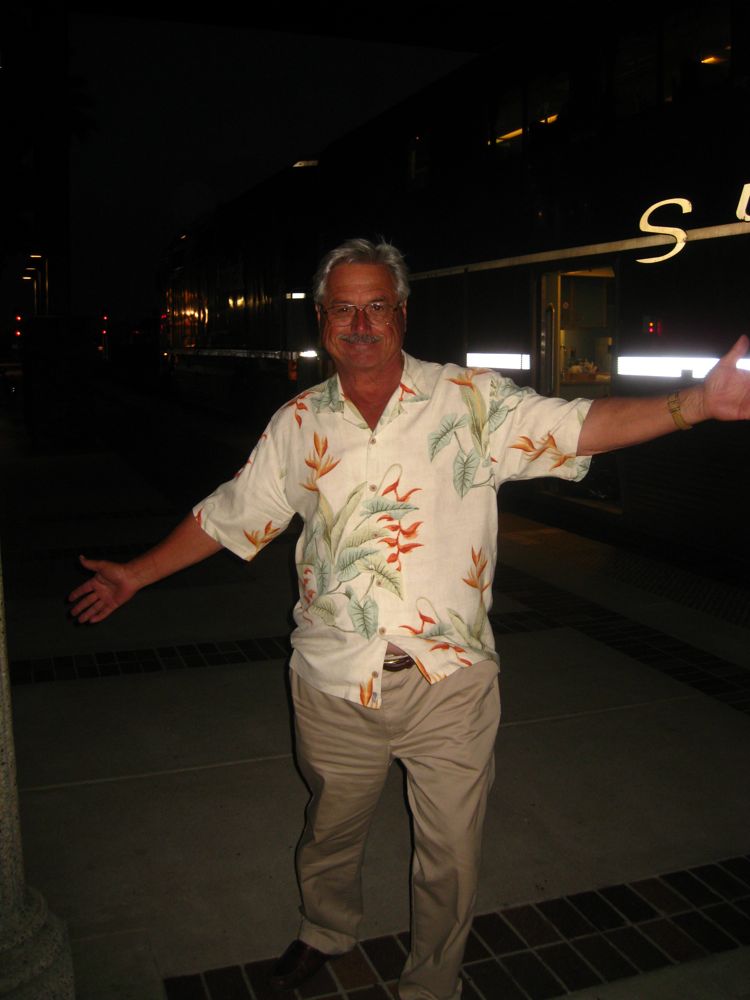

The Spaghetti Factory is calling us
Did you know? - The Old Spaghetti Factory is an Italian-style restaurant currently operating in 38 locations in several U.S. States, primarily Oregon, Washington, California and Utah. In addition to its US locations, The Old Spaghetti Factory has restaurants in the Canadian provinces of British Columbia, Alberta, Manitoba, and Ontario. There are a total of 13 locations in Canada, as well as Nagoya in Japan, and previously in Kobe and Kawagoe, Saitama (closed 2009).
The chain was started on January 10, 1969, by Guss Dussin in Portland, Oregon. Some restaurant locations have been in older warehouse and historic locations. The restaurant decor features antiques, including chandeliers, brass headboards, and footboards at bench backs for booths. Each restaurant's most prominent decor feature is a streetcar in the middle of the restaurant with seating inside.




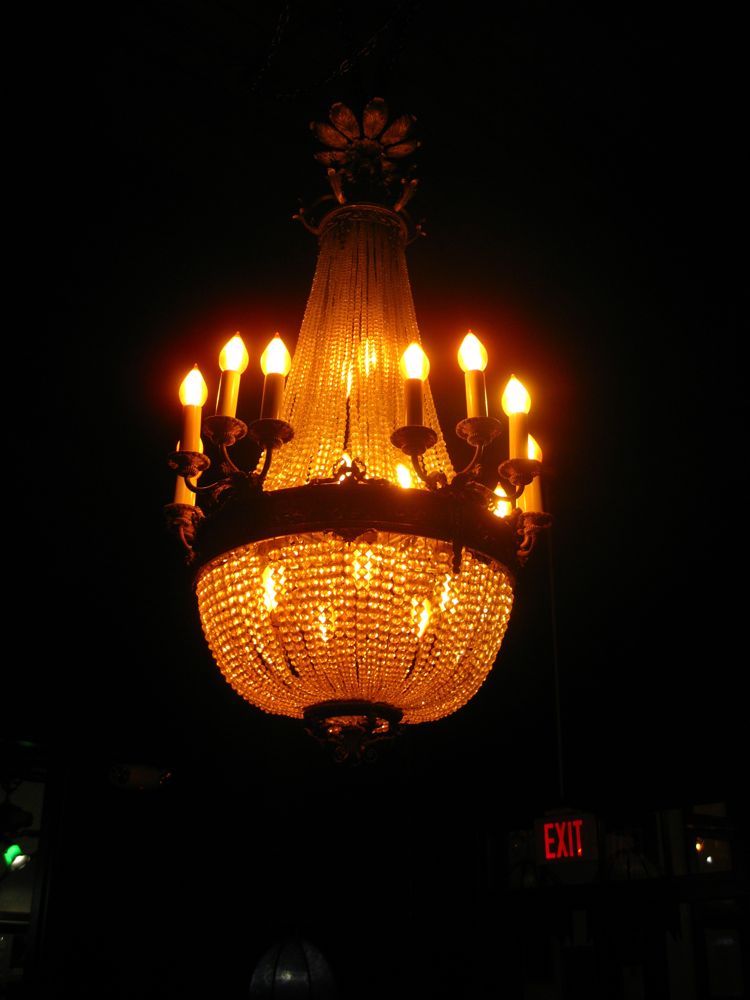



"What do you do???"



Heading for home
